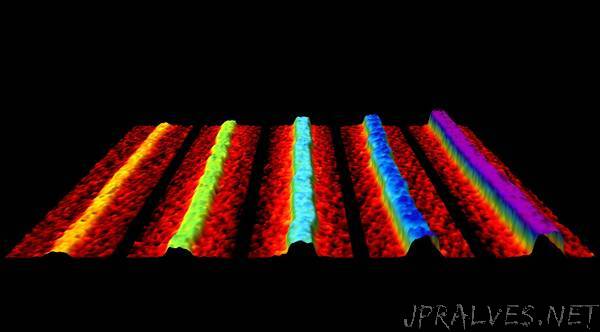
“VCU physics professor Loren Picco, Ph.D., is among a team of researchers that is the first to produce quantities of potentially revolutionary ribbons of phosphorene.
Since the isolation of 2-dimensional phosphorene — the phosphorus equivalent of graphene — in 2014, more than 100 theoretical studies have predicted that new and exciting properties could emerge by producing narrow “ribbons” of the material.
Now, those ribbons have been made and measured for the first time, and they could revolutionize electronics and fast-charging battery technology.
In a new study published in Nature, researchers from University College London, the University of Bristol in the United Kingdom, Virginia Commonwealth University and Ecole Polytechnique Federale de Lausanne in Lausanne, Switzerland, describe how they formed quantities of high-quality ribbons of phosphorene from crystals of black phosphorous and lithium ions.
One of the study’s co-authors was Loren Picco, Ph.D., associate professor in the Department of Physics in the VCU College of Humanities and Sciences. Picco’s research involves video-rate imaging with high-speed atomic-force microscopy, which enabled the detailed and rapid analysis of ribbons, in collaboration with the University of Bristol.
Picco called the ribbons “2D wonder materials.”
“As we discovered the ribbons, our tools for characterizing their morphologies rapidly evolved,” Picco said. “The high-speed atomic force microscope that we built has the unique capabilities to map the nanoscale features of the ribbons over their macroscopic lengths. We could also assess the range of lengths, widths and thicknesses produced in great detail by imaging many hundreds of ribbons over large areas.”
The researchers believe the new material could be applied to technology such as batteries, solar cells, thermoelectric devices for converting waste heat to electricity, photocatalysis, nanoelectronics, quantum computing and more.
The nanoribbons are formed by mixing black phosphorus with lithium ions dissolved in liquid ammonia at -50 degrees C. After 24 hours, the ammonia is removed and replaced with an organic solvent that makes a solution of nanoribbons of mixed sizes. These ribbons were then shipped from UCL to Picco and the team at Bristol for analysis.
While continuing to study the fundamental properties of the nanoribbons, the team intends to also explore their use in energy storage, electronic transport and thermoelectric devices through new global collaborations.
The work was funded by the Engineering and Physical Sciences Research Council and the Royal Academy of Engineering.”
